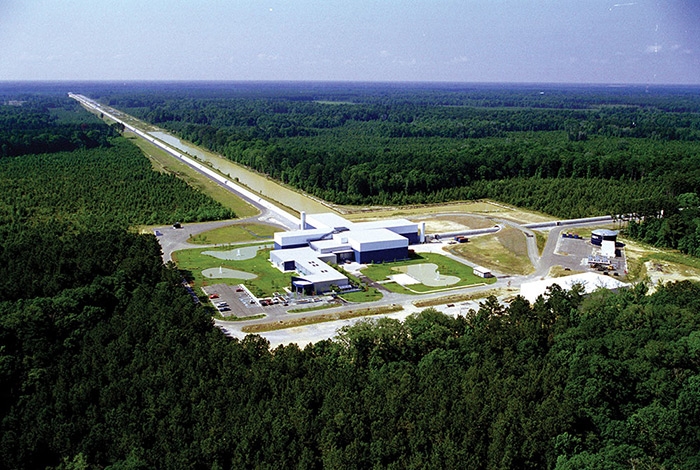Upgraded LIGO will begin hunt for gravitational waves soon

Scientists hope a $200m upgrade to LIGO will bring them nearer to directly observing gravitational waves. (Courtesy: LIGO/Caltech)
A $200m upgrade to the Laser Interferometer Gravitational-wave Observatory (LIGO) has been completed, with the facility set for observations in the coming months as it aims to be the first to detect a gravitational wave. Dubbed Advanced LIGO, it consists of two separate telescopes in the US – the Livingston observatory in Louisiana and the Hanford observatory in Washington state – that use laser interferometers to search for gravitational waves.
According to Einstein's general theory of relativity, gravitational waves are effectively ripples in space–time that travel as a wave. While none have ever been directly detected, scientists have observed a loss of energy as two neutron stars – the dense cores of once-massive stars – spiral toward each other. That energy loss is precisely what Einstein's equations predict would be emitted as gravitational radiation.
See full text
There are no published comments.
New comment